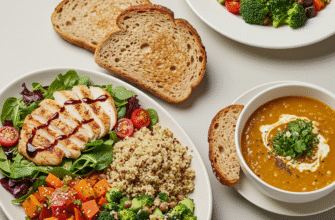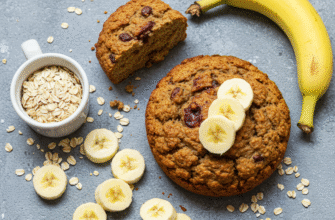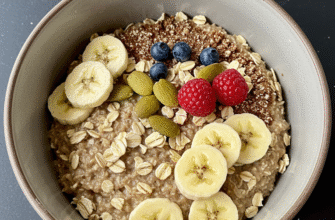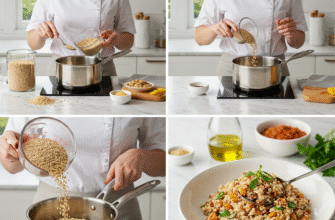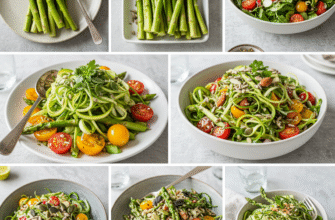That weekly pilgrimage to the grocery store. For some, it’s a chore, for others, a mini-adventure. But for almost everyone, it represents a significant chunk of the household budget. Wouldn’t it be nice to navigate those aisles with a bit more confidence, knowing you’re getting what you need without emptying your wallet? Mastering the art of smart grocery shopping isn’t about extreme couponing or depriving yourself; it’s about strategy, awareness, and making conscious choices.
The Foundation: Planning Your Grocery Expedition
The absolute cornerstone of saving money and time at the supermarket is planning. Winging it is a recipe for impulse buys and forgotten essentials. Before you even think about grabbing a cart, take stock of your current inventory. What’s hiding in the back of the fridge? What staples are running low in the pantry? Make a list – a real, physical list or a digital one on your phone.
Go a step further and sketch out a rough meal plan for the week. Knowing what you intend to cook helps you buy ingredients with purpose. No more wondering what to do with that random bunch of kale you bought on a whim! Check the weekly grocery flyers (online or paper) before you finalize your list. See what’s on sale and try to incorporate those items into your meal plan. If chicken breast is heavily discounted, perhaps plan for a stir-fry or grilled chicken salad.
Finally, and this is crucial: eat something before you go. Shopping on an empty stomach is notoriously dangerous for your budget. Everything looks appealing, and that strategically placed display of donuts near the entrance suddenly seems like a fantastic idea. A small snack beforehand provides the willpower needed to stick to your list.
Navigating the Aisles Like a Pro
Grocery stores are designed to make you spend more. End caps often feature high-margin items, not necessarily the best deals. The layout encourages you to walk through more aisles than necessary, increasing exposure to tempting products. Stick to your list as much as possible. Treat it like your map through the potentially costly landscape of the supermarket.
Understanding Unit Pricing
One of the most powerful tools at your disposal is the unit price. This little number, usually found on the shelf tag, tells you the cost per ounce, per pound, per item, or per sheet. Don’t just look at the overall price tag. A larger package might seem cheaper, but the unit price reveals the true value. Comparing the unit prices between different brands and sizes of the same product is the single best way to ensure you’re getting the most for your money.
Always check the unit price! It allows for a direct comparison between different package sizes and brands. This small step can lead to significant savings over time. Don’t assume bigger is always cheaper; the unit price reveals the real cost per measure.
Be mindful of brand loyalty too. While you might have favorites, store brands (also known as private labels or generic brands) have improved dramatically in quality over the years. In many cases, they are manufactured by the same companies that produce the big-name brands. Give them a try, especially for basic staples like flour, sugar, canned goods, and cleaning supplies. The savings can be substantial.
Leveraging Sales, Coupons, and Loyalty Programs
Sales cycles are a real thing. Stores often rotate which items go on sale. If you have pantry space, stocking up on non-perishable items like pasta, canned tomatoes, or toiletries when they hit a rock-bottom price can save you money in the long run. Just be sure it’s something you’ll actually use before it expires and that you have adequate storage.
Loyalty programs are ubiquitous now. Signing up is usually free and often gives you access to exclusive member pricing or digital coupons. Load digital coupons directly onto your card or app before you shop. While clipping paper coupons might seem old-fashioned, they can still offer savings, especially when combined with store sales (check the store’s coupon policy).
Seasonal Savvy
Buying produce that’s in season is generally cheaper and tastes better. Strawberries in winter will cost a premium and likely traveled a long way. In summer, however, they’ll be abundant and more affordable. Familiarize yourself with the general growing seasons for your favorite fruits and vegetables. Farmers’ markets can also be great sources for fresh, seasonal produce, often at competitive prices.
Smart Choices: Bulk, Dates, and Avoiding Waste
Buying in bulk isn’t always the smartest move. It only saves money if you actually use the product before it goes bad or expires. Consider your household size and consumption rate. A giant tub of yogurt might be cheaper per ounce, but not if half of it spoils. Bulk bins, however, can be excellent for items like spices, nuts, grains, and dried fruit, as you can buy the exact amount you need, reducing potential waste.
Understand the difference between “sell-by,” “use-by,” and “best-before” dates. “Sell-by” is information for the store. “Use-by” is typically related to safety for perishable items. “Best-before” indicates peak quality; the item might still be perfectly fine to eat afterward, though the texture or flavor might slightly diminish. Use your judgment and senses – look and smell – rather than tossing food based solely on a “best-before” date.
Food waste is wasted money. Plan meals to use up ingredients, store food properly to extend its life, and get creative with leftovers. Approximately one-third of all food produced globally is lost or wasted; smart shopping and consumption habits can help reduce this figure, starting in your own kitchen.
Timing and Checkout Strategies
If possible, try to shop during off-peak hours. Weekday mornings or evenings are often less crowded than weekends. This means less stress, shorter checkout lines, and potentially better-stocked shelves. Some people find shopping early in the morning after overnight restocking yields the freshest produce and best selection.
At the checkout, keep an eye on the scanner to ensure prices ring up correctly, especially for sale items. Mistakes happen. Politely point out any discrepancies. Using reusable bags is not only environmentally friendly but some stores even offer a small discount per bag used.
The Final Tally
Smart grocery shopping isn’t about deprivation; it’s about being intentional. By planning ahead, understanding pricing, utilizing deals wisely, and reducing waste, you gain control over your grocery budget. It might take a little extra effort initially, but the payoff – more money in your pocket, less food waste, and a pantry stocked with things you’ll actually use – is well worth it. Turn that weekly chore into a successful mission for savings and efficiency.


